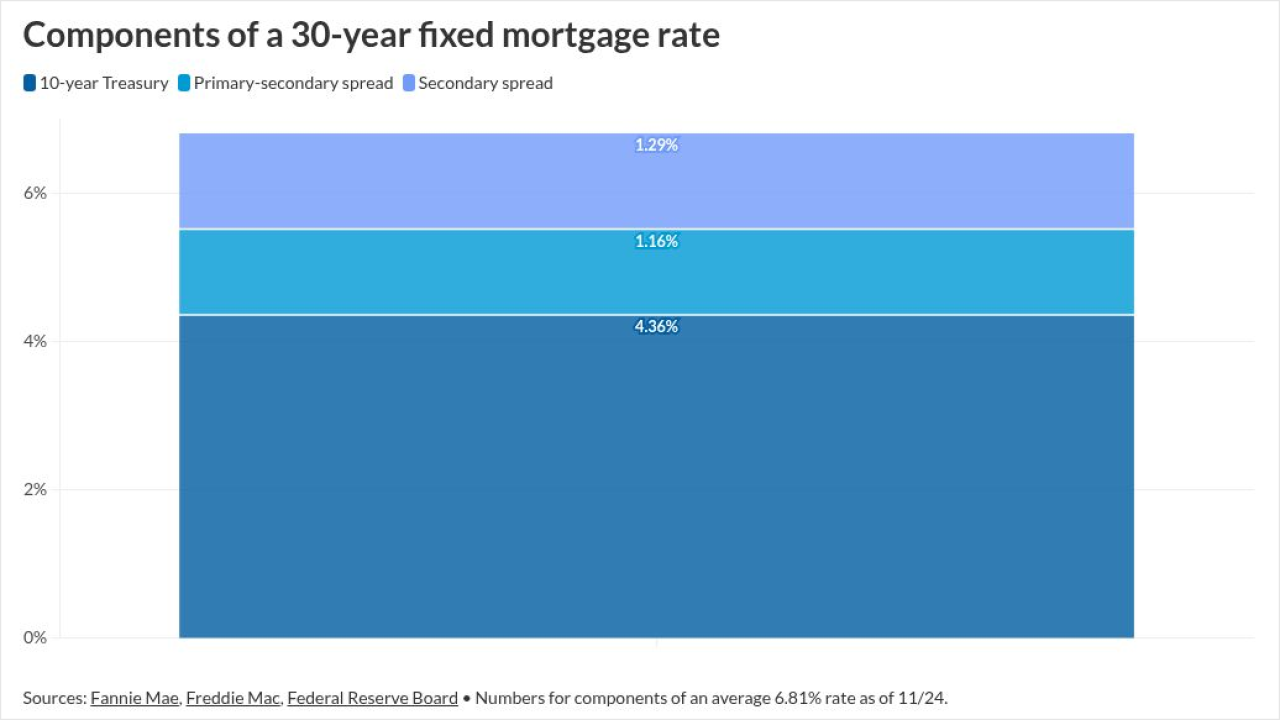Having a collateralized loan obligation (CLO) team focusing on broadly syndicated loans (BSL) and another team on opportunistic credit investments has created synergies for Sculptor Capital Management. This has been especially beneficial with the proliferation of liability management exercises (LMEs) this year.
"The U.S. credit team members sit on one floor and we have meetings twice a week where we discuss everything going on in the market," said Josh Eisenberger, head of U.S. CLO management at Sculptor Capital.
The New York City-headquartered firm manages $34 billion in assets overall, including real estate and multi-asset investment strategies, with offices in London, Hong Kong and Shanghai. Then known as Och-Ziff Capital Management, in 2007 it was one of the first hedge funds to complete an initial public offering. The storied firm changed its name to Sculptor Capital in 2019, and real estate investment firm Rithm Capital acquired it in November 2023.
The firm launched its CLO business in 2012 and now manages 22 CLOs with AUM of $8.5 billion in the US, and 10 CLOs in Europe with AUM of $4 billion—each CLO holding 350 to 450 loans. Eisenberger joined the firm in 2013 as an analyst, after earning his MBA at the University of Chicago and working for two years at debt investor GoldenTree Asset Management. He recently spoke to Asset Securitization Report about current dynamics in the credit markets.
ASR: How do Sculptor's BSL CLO and opportunistic credit arms interact?
Eisenberger: The largest and most liquid loans are held by CLOs, and many are currently going through challenging times. So there's tremendous overlap between the opportunistic credit and CLO businesses. It may be a name we're in or something we looked at and didn't participate in, so we'll have institutional knowledge that gives our opportunistic business a head-start in terms of their investment analysis. We have a repository of financials and lender presentations and models that most distressed debt shops wouldn't have.
ASR: How does the CLO side benefit?
Eisenberger: The opportunistic business has definitely helped answer questions about liability management and how we operate in that environment. We sit near our opportunistic lending and restructuring professionals and work closely with them, and so we learn early and often about LMEs that are happening.
Having scale and presence in both the performing and opportunistic markets brings a meaningful amount of synergies and enables us to produce better outcomes for both lines of business.
ASR: LME use has exploded this year. Do you see that continuing?
Eisenberger: Early on, there was a lot of creditor-on-creditor warfare, but what we're beginning to see is more lender groups forming broad cooperation agreements ahead of time, before the company or sponsor starts adjusting the capital structure. By presenting a unified front, these groups have been able to effectuate better outcomes for lenders at large, such as preventing the company from amending documents with just 51% of lenders.
ASR: How does that play out practically?
Eisenberger: We're seeing more LMEs that result in 5% to 15% haircuts for senior secured lenders, but in return they get material tightening of the documentation to protect their original investment from being diluted further. And oftentimes the LMEs enable lenders to inject needed capital at advantageous terms, so they can earn good returns on the new money.
ASR: What form does the new money take?
Eisenberger: Mostly super-senior secured debt that ranks either pari or more often senior in priority to the existing first-lien debt. The group may be 90% of lenders and often will open up even to 100% of the lender base. The people cooking the stew are the ones participating in the new money.
ASR: To what extent are you seeing this?
Eisenberger: It may not be most LMEs but many—and certainly the most recent and larger ones out there publicly–have seen very large cooperation agreements driving the conversations to effectuate extension trades or some sort of relief, and they have the support of large percentages of all debt classes. So we're starting to see it becoming more of the norm, where lenders are working with each other as opposed to against.
ASR: Do such large cooperation agreements reduce liquidity of the debt?
Eisenberger: They could potentially reduce liquidity, because trading of the debt is limited to people inside the cooperation agreement. But a creditor with a sizable piece of the loan would typically exchange illiquidity for the preferred economics—the better treatment—of their existing loan.
ASR: CLO reset and refinance issuance has been strong this year. What does Sculptor see heading into 2025?
Eisenberger: Keep in mind that the CLO market was very robust in 2019 and in 2021, when AAAs on those deals were done anywhere between 135 basis points and 150 bps over SOFR. Then in 2022 and 2023, with the volatility in credit markets, AAA spreads blew out, in some cases wider than 200 bps. This year, spreads have compressed to the low 130s, so all those deals that were done with a 150 handle or higher—assuming their credit quality is intact—are ripe for refinance or reset transactions.
ASR: What about on the asset side?
Eisenberger: Light M&A and LBO activity has resulted in low new loan issuance, so investors are bidding up the prices on existing loans. When the price on an existing loan increases to north of par and the loan is callable, then the corporate management team may look at tighter current loan spreads and refinance the spread on that loan tighter, and you'll see compression on the asset side.
CLO arbitrage today is as good as it's been in two or three years because there's little loan price appreciation modeled into equity returns, and as long as liability spreads continue to tighten or firm at these levels, CLOs will restrike those deals at lower spreads.
ASR: How long might this continue?
Eisenberger: We haven't yet progressed through all the deals done at wide [spread] levels, and some won't become callable until later this year or early next year. So liability spreads can't be reset for another six to 12 months. We did a deal earlier this year that is 30 bps wider than our most recent AAA print. When that deal becomes callable in two years, if we're still in this situation it will be eligible for a reset or refi.
ASR: What is your broader market outlook?
Eisenberger: Rates remain elevated compared to when loans originated in 2020 and 2021, so that's impacting many borrowers' ability to invest in their businesses or even make debt service, and that's leading to a lot of LME conversations. We continue on the CLO side to focus on borrowers' ability to pay their bills from their in-place cashflow. Many borrowers are struggling with high debt burdens.
With the new administration coming into office, there's talk of tariffs or other economic activity that might be needle-moving in terms of companies' ability to generate strong operating income. We monitor these types of macro developments daily. For example, Stanley Black & Decker recently announced it will have to raise prices in anticipation of tariff increases.
We do believe the credit and CLO markets are healthy, and they will provide for robust issuance on the CLO side that will help catalyze new issuance within the loan market. And a lower benchmark from the Federal Reserve should allow the market to resurrect the LBO and M&A activity that is the life blood of the credit markets in general.





